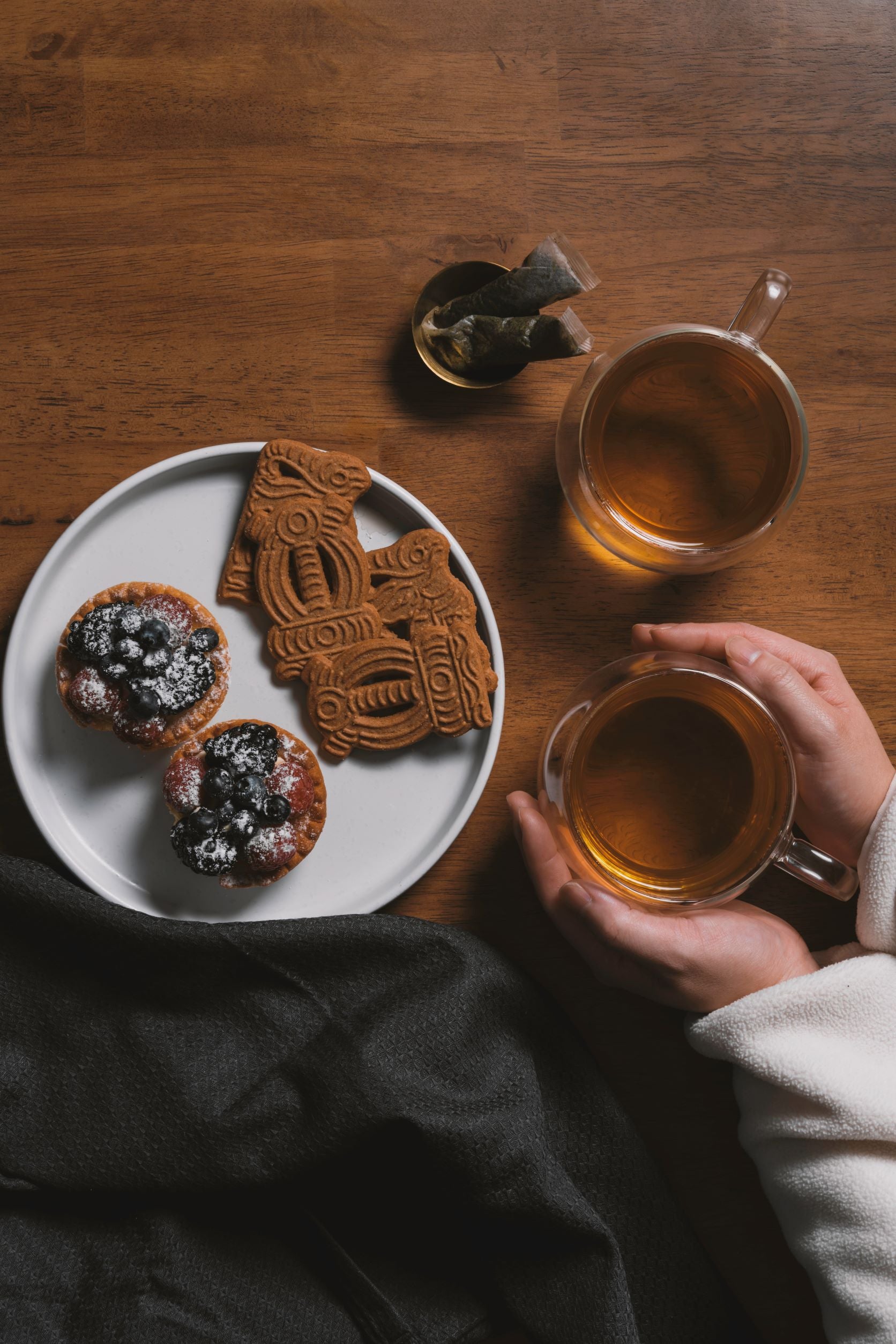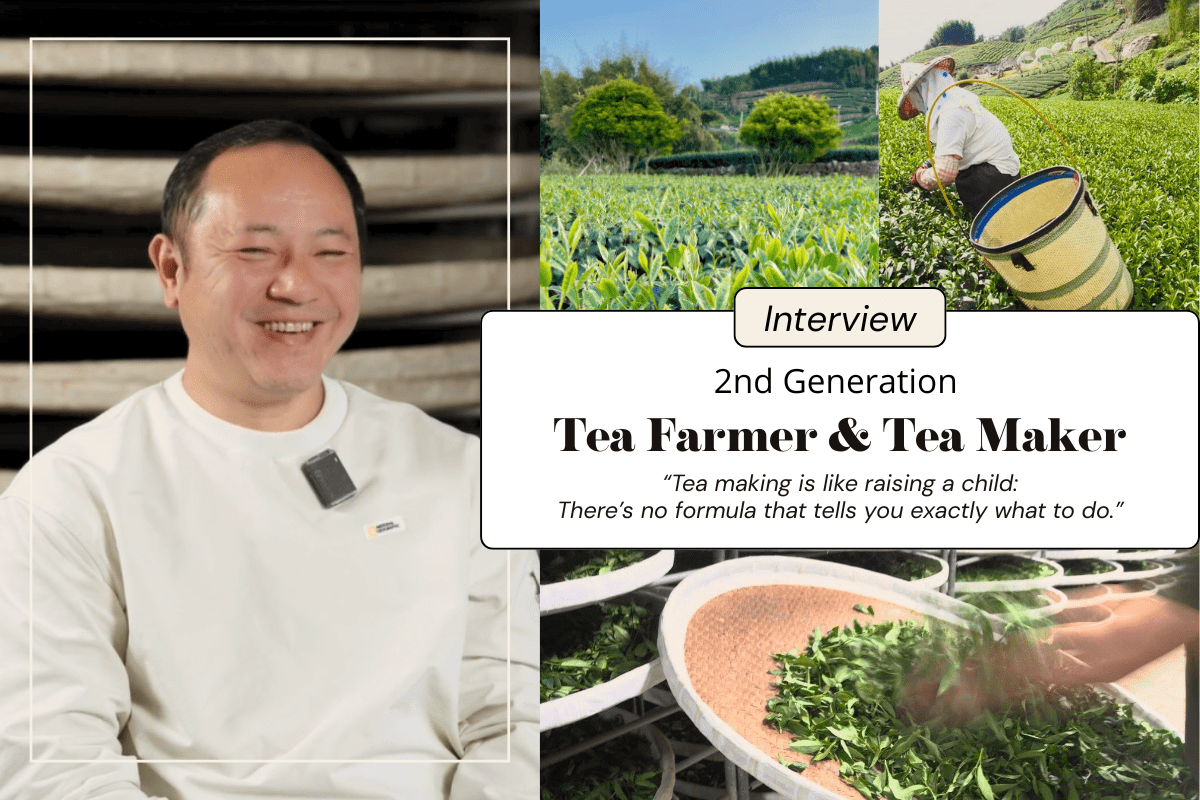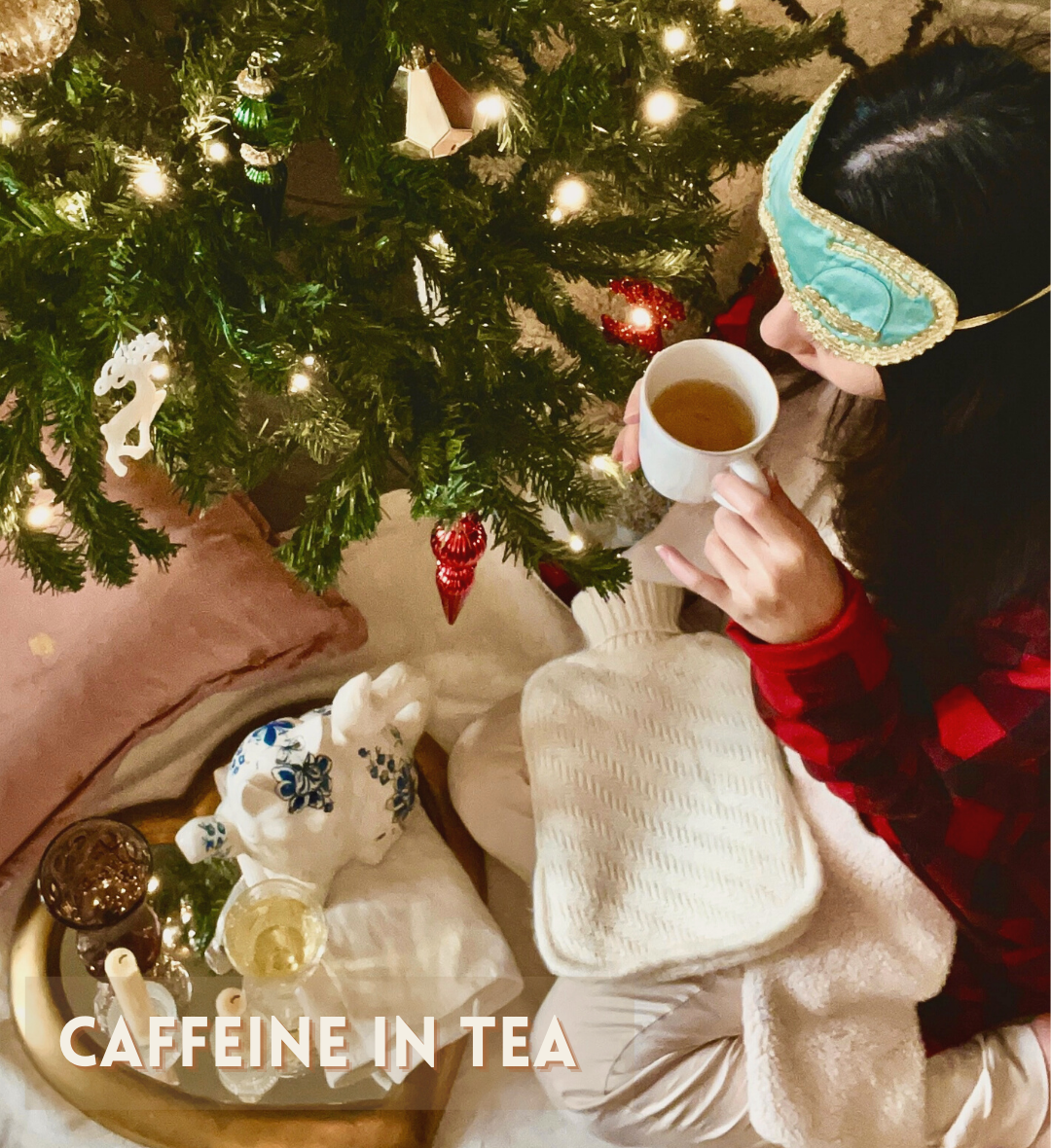What is Oolong Tea?

Tea drinkers unite!
Whether you're at work or at home, it can be hard to find time for yourself due to the pressure we feel from our responsibilities. Lucky for those who need a well-deserved break, there's nothing that compares to winding down with some tea after a long day.

Welcome to Chimney & Tea’s simple guide on what oolong tea is. This article will take you on a journey from the tea fields of China and Taiwan to your teacup. It will introduce the rich history, varied types, and cultural significance of this traditional beverage that has been enjoyed by tea lovers for thousands of years.
Whether you're a seasoned tea connoisseur or a beginner, this guide is designed to help you appreciate the beauty of oolong tea and its place in the world of teas.
What Is Oolong Tea?

Oolong is a traditional loose leaf tea that is integral to Chinese and Taiwanese cultures. Renowned for its unique and complex flavors, oolong has been savored for centuries, and serves as more than just a beverage - it's a cultural practice, an art form, and a symbol of hospitality.
Fun Fact: Did you know the Chinese term for Oolong tea is 烏龍茶, or wu-lung cha ("Black Dragon")? This gives us a glimpse into the cultural richness and depth that comes with the tradition of tea drinking in China, where even tea names carry a certain mystique and allure.
Not only has oolong been valued for its health benefits throughout history, but its meticulous preparation process also represents cultural values of patience and harmony. Therefore, oolong tea is not merely a refreshing drink, but a valued tradition deeply rooted in its cultures of origin.
Where is Oolong Tea From?

[Image Source: Visit Our China]
Oolong tea is originally from the Wuyi Mountains in the northern Fujian province of China, and comes with a rich history. Wuyi's tea-making industry has been recognized by the emperors since the Tang dynasty when it produced tribute tea to Tang emperors for royals and government officials. Tea started popularizing among the common citizens in the Song dynasty (960-1279 AD).
Wuyi developed a partially oxidized tea processing style and skills in the late Ming (1368–1644)-Qing (1644-1911) dynasty, where seeds and techniques eventually spread across the strait to Taiwan in the 18th-19th century. The cultural differences between China and Taiwan, including their food and flavour preferences, also influenced how their tea masters processed oolong tea. This led Taiwanese tea farmers to improvise and develop unique processing skills, aided in part by Japan, which occupied Taiwan at the time.
In the early 1660s, China began trading oolong tea with Britain, and by 1869, Taiwanese Formosa oolong tea made its way to the U.S. by John Dudd. Today, oolong tea is cherished globally for its distinct flavour and health benefits.
What is Special About Oolong Tea?
From oolong tea’s one-of-a-kind flavour to the tea producers’ artisanship and craftsmanship, these unique aspects make oolong a special category that tea enthusiasts should not overlook.
To begin, oolong tea is most often enjoyed for its distinct flavour and aroma profiles. These unique characteristics are influenced by tea region, types of oolong tea, and tea processing approaches, offering a broad spectrum of tastes for tea lovers to explore. Learn more about common factors that can influence the taste of oolong tea in our article, “What Does Oolong Tea Taste Like?”.

Moreover, technique is crucial in oolong tea production. The hand-harvesting process only takes place during specific times of the year, which requires tea farmers to be diligent in their craft. During the harvesting phase, tea farmers must also be very careful in picking only the tips of fresh (new growth) leaves which are the most suitable for oolong tea production.
Furthermore, the expertise involved in tea processing requires a deep understanding of the tea production process. Tea masters intuitively process every batch based on the tea leaves of that particular harvesting season, and must consider the weather conditions during the tea processing period. They must also closely supervise each step and adjust their methods throughout a 2-3 day non-stop tea-making process.
What is Oolong Tea Made of?
Oolong tea leaves are produced from the camellia sinensis plant, which is actually the same tea plant that also makes green tea and black tea.

Essentially, any tea plant can be processed into green or black tea, but some varieties are more appropriate for a particular type. This is comparable to how grapes are used in wine production. While red wines are typically made from red grapes, different varieties from various regions can yield distinct wines like Pinot Noir, Shiraz, and Cabernet.
Is Oolong the Same as Green or Black Tea?
Or, what is the difference between white, black, green, and oolong tea?

The main difference between these types of teas is the plant type, the oxidation level, and how they are processed. Oxidation occurs when tea leaves are exposed to oxygen under sunlight. This exposure turns the leaves brown as their water content evaporates, allowing the flavours to develop.

What Is Roasted Oolong Tea?
 [Image source: Yo Shan Tea]
[Image source: Yo Shan Tea]
Roasted oolong tea undergoes an additional roasting process. This process deepens the flavour, resulting in a more mellow, toasted flavour. Roasting is a post-production step performed after the tea leaves have undergone the entire tea making process. The objective is to lower the moisture content in the tea leaves to below 5%, which is better for preservation and extends the shelf-life of the tea. Learn more about the taste of roasted oolong in our article, “What Does Oolong Tea Taste Like?”.
Green vs. Dark Oolong: What’s the Difference?
Oolong tea is mainly categorized into two distinct types: Green Oolong (also known as “Light” or “Jade” Oolong), which is closer to green tea, and Dark Oolong, which is closer to black tea.

The diversity between these two types not only enriches the tea-drinking experience but also highlights the intricate art of tea-making.
Green Oolong, with its light hues, delivers a refreshing and subtle taste, while Dark Oolong provides a toastier, more robust flavour, reflecting the complexity of its preparation. Each of these variants brings its own unique flavour profile and characteristics to the table, offering a rich and diverse experience to the palate.
Common Types Of Oolong Tea
Within these two categories of oolong tea, there are subcategories such as:

Taiwan Alishan "High Mountain" Oolong Tea (阿里山高山烏龍茶)

Taiwanese Alishan "High Mountain" Oolong Tea is a signature, golden-coloured tea with a floral-fruity aroma, fresh and crispy taste, and long-lasting sweet aftertaste. Alishan high mountain oolong tea is an iconic Taiwanese tea. It is closer to green tea due to its lightly-oxidized processing method and is processed into a tight ball shape.
However, tea farmers have developed high mountain oolong black tea in recent years which has become popular among black tea lovers, as it combines the features of oolong tea with a hint of a honey-like natural sweet, bold and toasty taste.
Wuyi Da Hong Pao (大红袍, ‘Big Red Robe’)

[Image Source: Visit Our China]
Wuyi Da Hong Pao, the world's most expensive tea, is extremely rare. This heavily-oxidized tea presents hints of stone fruit and a brown sugar flavour, complemented by a woody fragrance. It has a velvety smooth body and a long, lingering aftertaste. The tea leaves are typically twisted in shape.
Tieguanyin (鐵觀音, ‘Iron Goddess of Mercy’)

[Image Source: Local Wisdom TW]
Tieguanyin, typically grown at lower elevations, is known for its pleasant orchid aroma and amber color. Its leaves are shaped in a twisted manner. Offering a balanced flavour, Tieguanyin ensures a smooth drinking experience that is neither overly sweet nor excessively bitter.
Taiwanese Milk oolong (金萱; “Jin Xuan Tea”)

Jinxuan Taiwanese Milk Oolong Tea is a small-leaf variety renowned for its subtle yet distinct creamy and milky taste profile. This unique flavour is naturally developed during the oxidation phase of the tea-making process. Milk Oolong is exclusively grown in Taiwan. However, due to its popularity, more and more "fake" milk oolong, complete with added scents and other artificial additives, have begun to flood the market. Genuine milk oolong does not possess a milky aroma before steeping and does not taste pungent.
What Does Oolong Tea Taste Like?

TASTE: The taste of oolong tea is full of layers but smooth. Oolong tea’s tasting notes can vary widely, with some being more sweet and woody, and others being more rich, depending on oxidation and roasting levels.
AROMA: Oolong tea’s scent is especially incomparable. It has a mix of toasty, fresh, and floral notes that will lighten your mood instantly. Some tea lovers compare the smell of oolong tea to orchid, rose, jasmine, and osmanthus.
Learn more about the taste of oolong tea in our article, “What Does Oolong Tea Taste Like?”.
Which Oolong Tea is the Best?
Choosing the best oolong tea for you is a delightful journey of discovery, and it's all about personal preference.
While some folks might fall in love with a certain type because of its taste, others might be drawn to a different kind due to its health benefits.

No matter which oolong you prefer, every sip will bring you on a sensory journey, transporting you to the lush tea fields where it was grown. To find the best oolong tea that suits your palate, you may wish to find the perfect oolong tea for you using our handy survey.
What is Oolong Tea Good For?
Oolong tea has many benefits and is good for your health and wellbeing in general. It can help those looking to lose weight, improve heart health, and reduce the risk of cancer. Oolong tea is also known for its anti-aging properties. Some of the reported health benefits of drinking oolong tea include:
- Boosting metabolism and aiding in weight loss
- Lowering cholesterol (and other symptoms of heart disease)
- Regulating blood sugar levels (e.g. Type 2 Diabetes management)
- Improving skin complexion
- Reducing stress and anxiety
- Atopic dermatitis (eczema) relief
To learn more about the health benefits of oolong tea, visit our blog post, "Benefits of Oolong Tea: Is It Good for Your Health?".
Does Oolong Tea Contain Caffeine?
Yes, oolong tea contains caffeine. The levels of caffeine differ from 35 to 55 mg, which is about the same amount of caffeine in decaf coffee. The longer tea is steeped, the more caffeine will be released. Therefore, oolong tea is a perfect substitute for those who are looking for a milder boost from a lower caffeine content beverage without the jitters associated with coffee. Learn more about the caffeine content in oolong tea in our article, "Does Oolong Tea Have Caffeine?".
Does Drinking Oolong Tea Come with Any Side Effects?
Drinking more than 4 cups of oolong tea per day increases the potential risk of side effects such as irregular heartbeat or headaches due to the caffeine content. For most people, drinking up to four cups of oolong tea per day is generally considered safe, but if you’re ever unsure, speak to a healthcare professional.
Ready to Brew Your Perfect Cup?
We hope you enjoyed our guide to oolong tea. With its rich history, intricate production process, and diverse flavour profiles, oolong offers a unique and immersive experience for both tea enthusiasts and novices alike.

Whether you prefer the light and refreshing taste of Green Oolong or the more robust and intense flavour of Dark Oolong, there's an oolong tea at Chimney & Tea that’s perfect for you. Learn how to brew the perfect cup of oolong tea in our article, “How to Brew Oolong Tea: Step-by-Step Guide”.
About Chimney & Tea
Founded on a passion for tea and a commitment to quality, Chimney & Tea is dedicated to producing and delivering the finest oolong teas from founder Regina Hu’s family-owned tea gardens in Alishan, Taiwan. We believe in the transformative power of a well-brewed cup of tea and strive to share the beauty and diversity of oolong with tea enthusiasts worldwide.
Our teas are sourced and packaged with a commitment to sustainable and ethical tea production. This ensures that every cup of Chimney & Tea oolong offers an authentic taste of its origin, while also promoting the wellbeing of our communities and the planet. Browse our collection of the highest quality oolong teas in the market today!
Learn more: discover the philosophy and founding story of Chimney & Tea.



